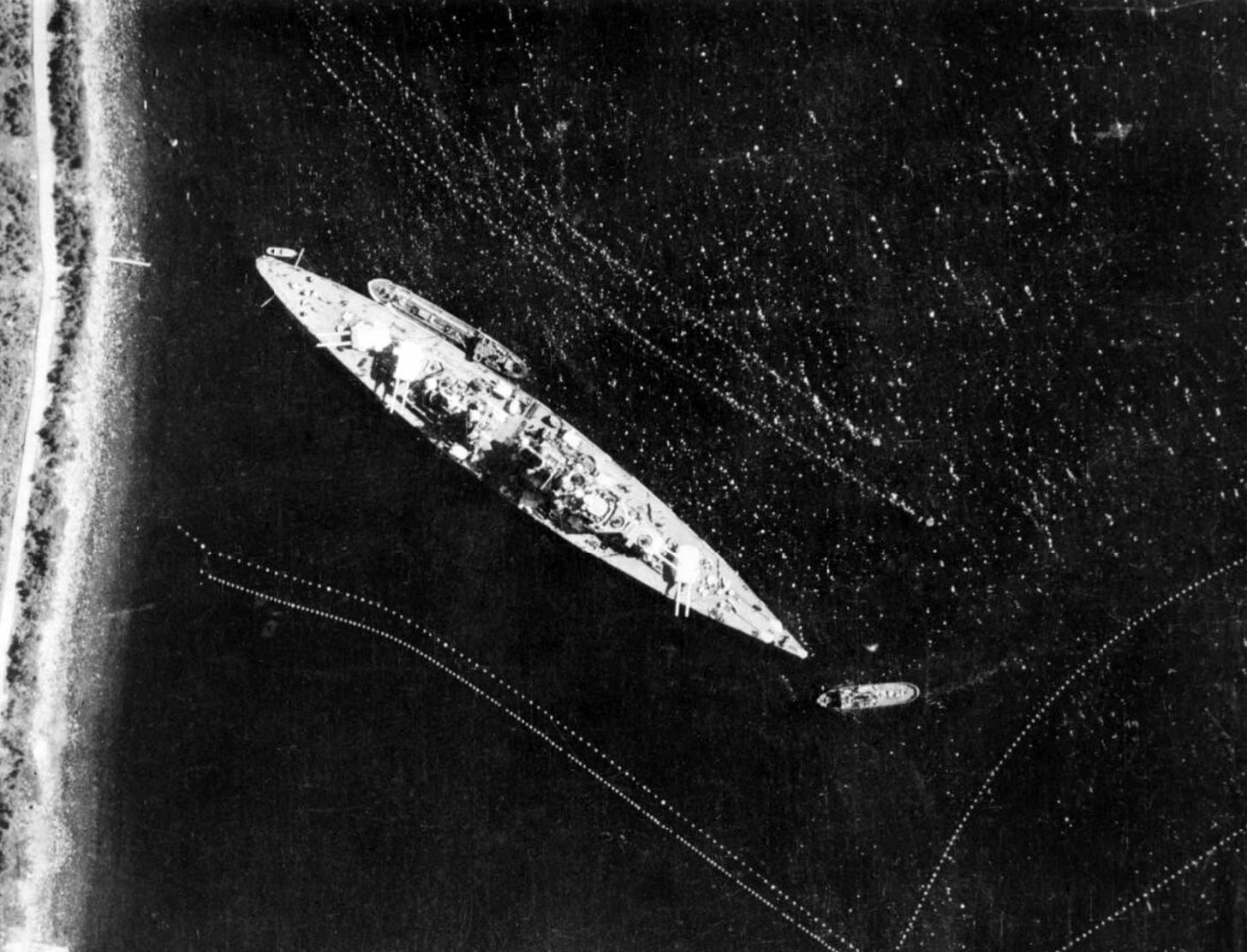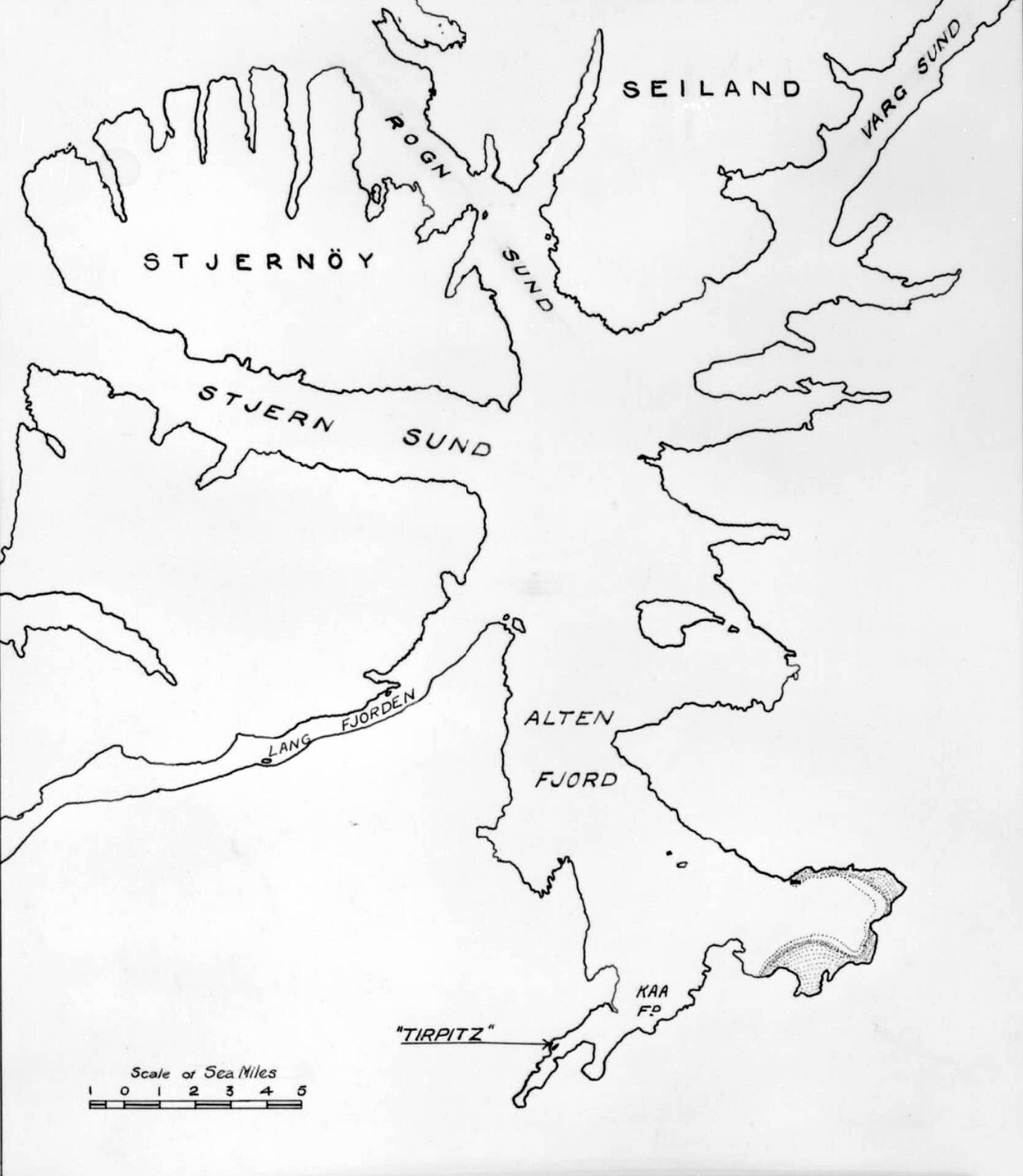Midget submarines attack Tirpitz
22nd September 1943: The highly secret Royal Navy 'X-craft' sneak into a Norwegian fjord to drop their charges and then attempt a perilous escape


The Royal Navy had sunk the Bismarck in 1941 but her sister ship, the Tirpitz, continued to threaten the sea lanes. The experience of dealing with the Bismarck had demonstrated that a large force of capital ships and aircraft had to be available if she put to sea. The mere existence of the Tirpitz hiding in the Norwegian fjords, meant that substantial forces were tied up, waiting to respond should she sortie out to attack the convoys to Russia. She had had a narrow escape when she put to sea in March 1942.
… we were sceptical about our chances against at least four tons of torpex exploding within a hundred yards.
Operation Source was an audacious attempt to attack the Tirpitz, and the smaller German ‘pocket’ battleship the Scharnhorst and the heavy cruiser Lutzow, by unconventional means. The midget submarine ‘X craft’ were developed to evade the anti-submarine nets and drop huge explosive charges underneath the hulls of the ships they were attacking. It was hoped this would give their crews the prospect of being able to get away from the scene.

Of the six ‘X craft’ that departed from Scotland on 11th September, two had already been lost as they were towed across the North Sea. On 22nd September the remaining craft were ready to attempt the run into the closely guarded Alten fjord. X-5, X-6 and X-7 proceeded to attack the Tirpitz.
Lieutenant B.C.G. Place1 commanded X7 with his crew of three. He began his ‘run-in’ at 0100 on the 22nd but got caught up in anti-submarine nets - and spent over an hour disentangling the craft by driving backwards, forwards, up and down. Finally, he was in sight of the target:
Keep reading with a 7-day free trial
Subscribe to World War II Today to keep reading this post and get 7 days of free access to the full post archives.



